| Early Spring Date: | April 23 |
| Late Spring Date: | June 1 |
| Best Dates to See in Spring: | April 28 - May 28 |
Spring: American Redstarts are one of the most common warblers at Monticello Park, especially during the third week in May. Redstarts breed in the Washington metro area, but not at Monticello. They prefer to nest in deciduous and mixed woodlands, often near water.
Fall: Some redstarts, especially those who breed nearby, begin to come through Monticello in August on their journey south. The greatest number of fall redstarts is seen through much of September, and a few still come through into the second week of October.
Where to See Them in the Park
Redstarts move around quickly while feeding in bushes or low in trees, often hovering and spreading their tail. They frequently go into the stream, and some display "obsessive compulsive behavior" — after they come out of the stream and preen, they sometimes re-enter the stream and go through the entire process again.
Physical Description
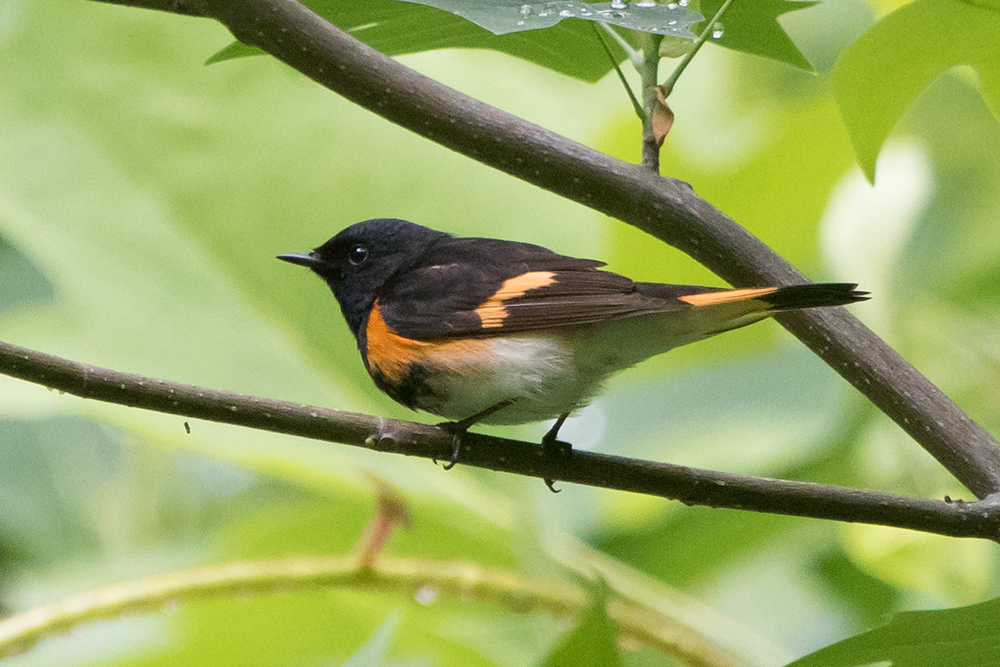
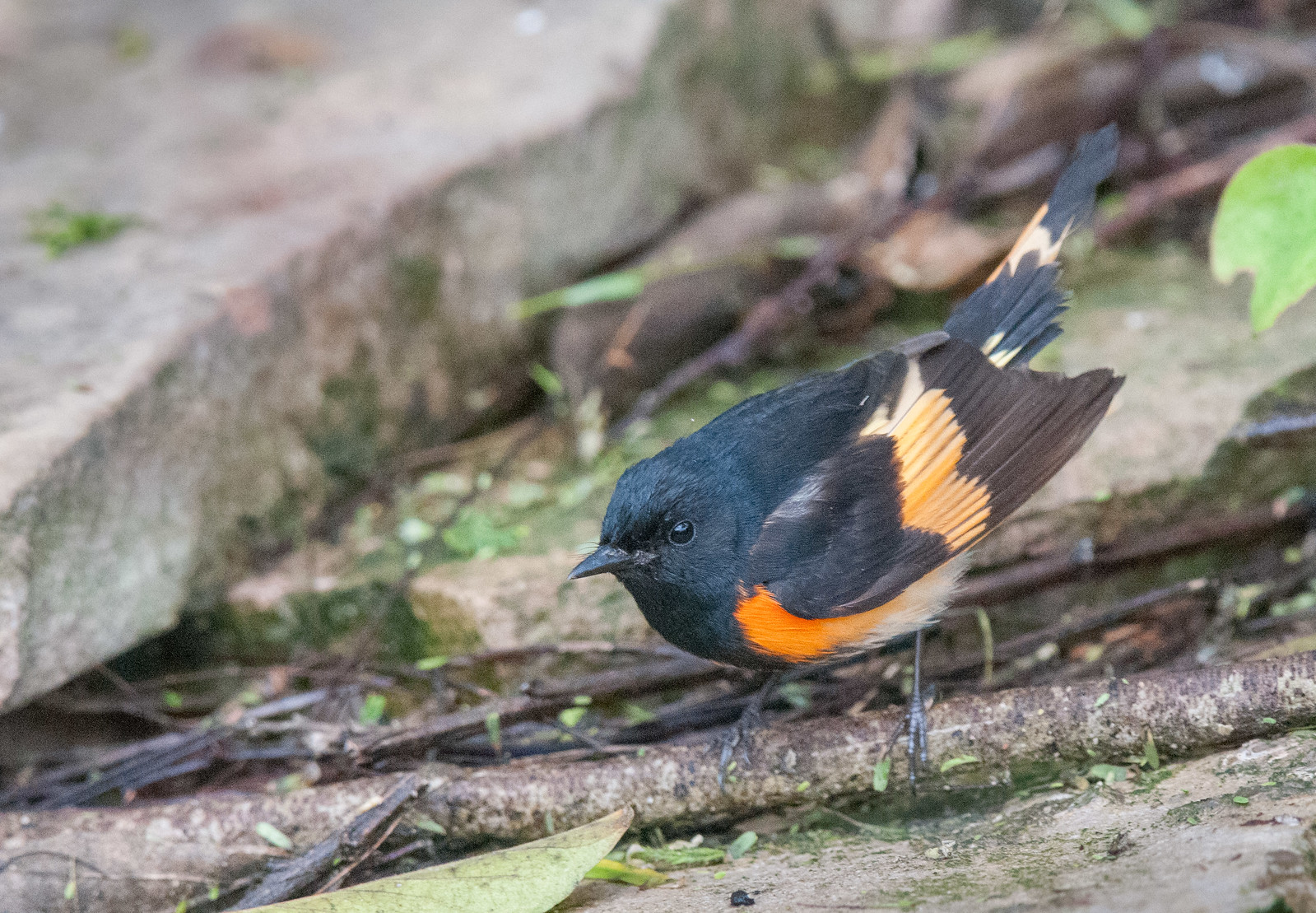
The adult male American Redstart is the blackest-looking warbler. He has orange markings, some of which are in the wings and tail.
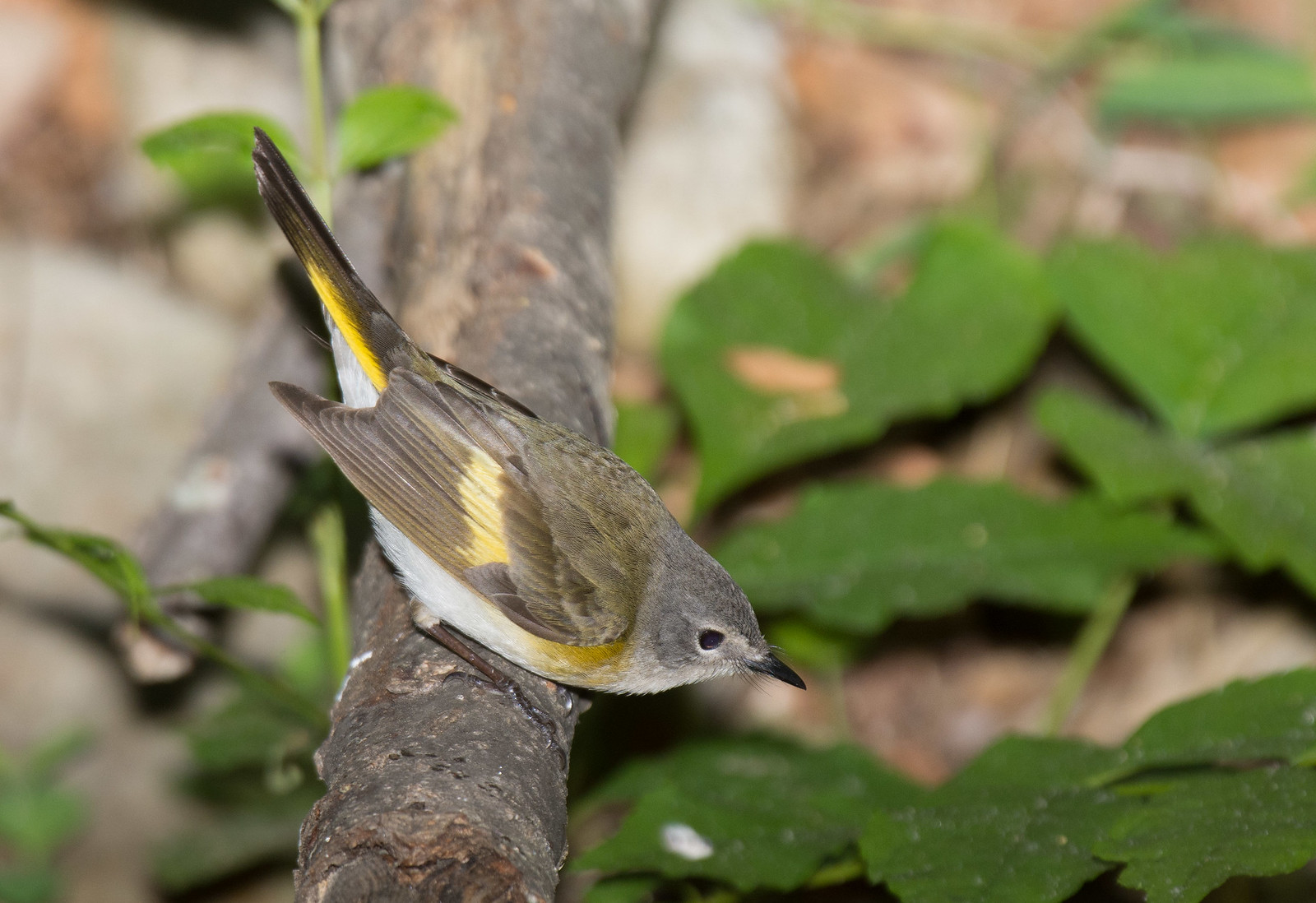
Females are mostly gray, with yellow patches on their sides and at the base of the tail. The yellow on their sides sometimes extends across the breast. They have a narrow broken white eyering and have a yellow patch on the wing that is sometimes not visible.

You also can see yellow on the underside of the female's tail. American Redstarts have one of the biggest differences in plumage between males and females of any warbler species who visits Monticello. Because the females look so different, they are sometimes called "yellowstarts". Young redstarts are also lumped into the yellowstart category.
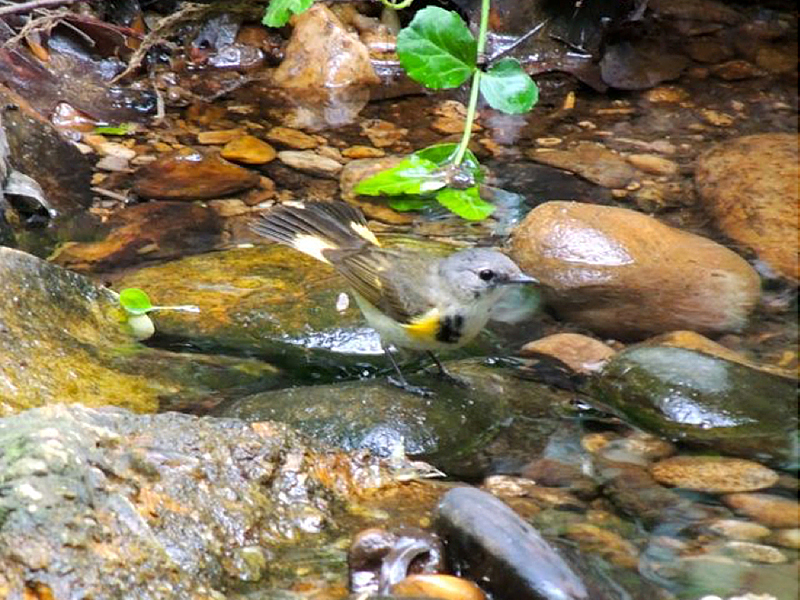
Immature plumage is seen on some birds who do not yet have adult plumage. Some yellowstarts who visit Monticello in the spring are immature males who have patches of black feathers. The patches occur due to molting, which is the process by which birds replace their feathers. In the country of Bhutan, everyone's birthday is officially on January 1. Something similar exists in the bird world. If a bird is born on any date during a particular year, it becomes a second-year bird the following January 1st. In their second year, some warblers conduct a partial molt before or during migration to their breeding grounds. This molt includes some of their body feathers, but not their flight or tail feathers. Growing wing and tail feathers requires a lot of energy, so young birds preparing to migrate wait until after the breeding season to replace them. The yellowstarts with black patches are males born in the previous year who have molted some of their hatch-year feathers and have grown some black adult feathers. These males will not look like adults until after their first full molt, which takes place after the breeding season in the year after they are born. Most warbler species do not show as much difference between the plumage of young birds and adults as redstarts do. One way bird banders can tell the age of warblers who do not show significant plumage variations is to examine the wear on flight and tail feathers. If these feathers are very worn, the warbler is probably a second-year bird who did not replace the feathers the previous fall.
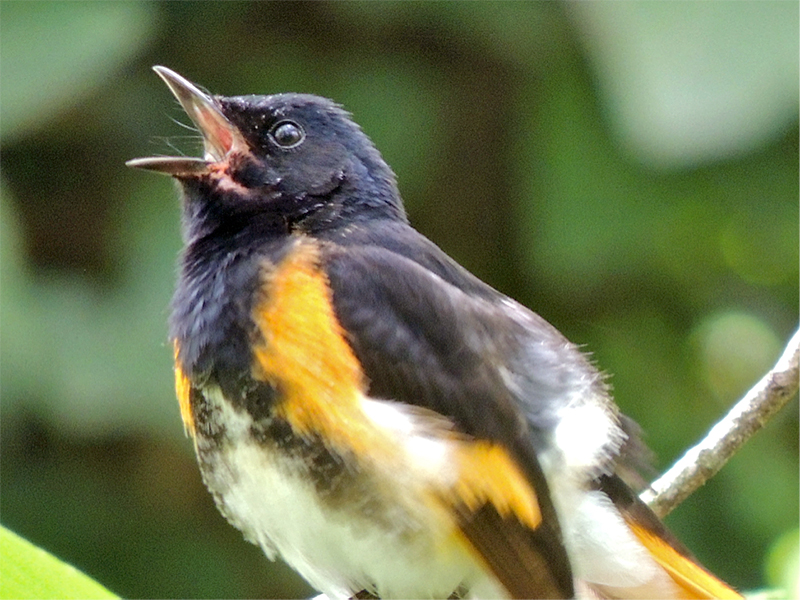
Rictal bristles are little hair-like feathers next to the bill. Most warblers have them, and they are useful for species such as redstarts who do aerial hawking of insects. The bristles frame the mouth and help the redstart to feel where insects are.
Fall: Adult male American Redstarts keep their spring plumage all year, as do females. Some first-fall birds look like adult females.
Vocalizations
The song of the American Redstart shows great variation and cannot be easily represented by a mnemonic. One method to recognize some redstart songs is by length — if you count to five quickly, the song is roughly that long. A common redstart song goes ZEE-ZEE-ZEE-ZEE-o, with the last syllable dropping off.
Hear the vocalizations of the American Redstart.Notes
Orange has been considered a separate color for only about 500 years, and it was named for the color of the fruit. Orange things have often been described as red, such as red hair or redstart. In The Clements Checklist of Birds of the World, 6th Edition, twelve other New World warblers are called redstarts. Only one of the others is regularly seen in the United States, and none are in the same genus as the American Redstart. Redstart means red tail. In Warblers of the Americas, a 1994 identification guide to all of the New World warbler species, the other redstart species are called whitestarts, which is more accurate. They all have white in the tail, but not red.
Origin of Names
Common Names: The word American distinguishes it from the Common Redstart in Europe. Redstart means red tail. The American Redstart reminded people of the Common Redstart, who has a reddish-brown tail that it often flashes. The Common Redstart is one of the Old World flycatchers, who are not related to the either the New World flycatchers or New World warblers.
Genus Name: Setophaga means moth eating.
Species Name: Ruticilla means red tail.
American Redstart video footage
Return to the Index
